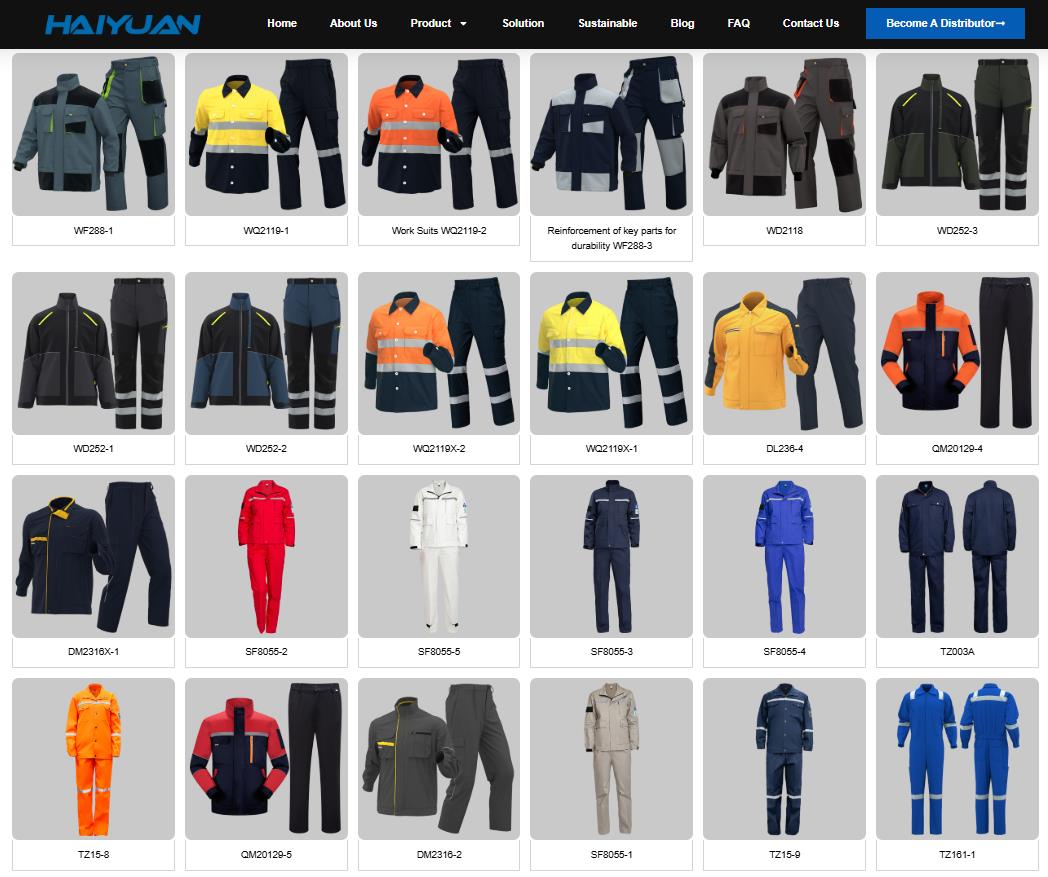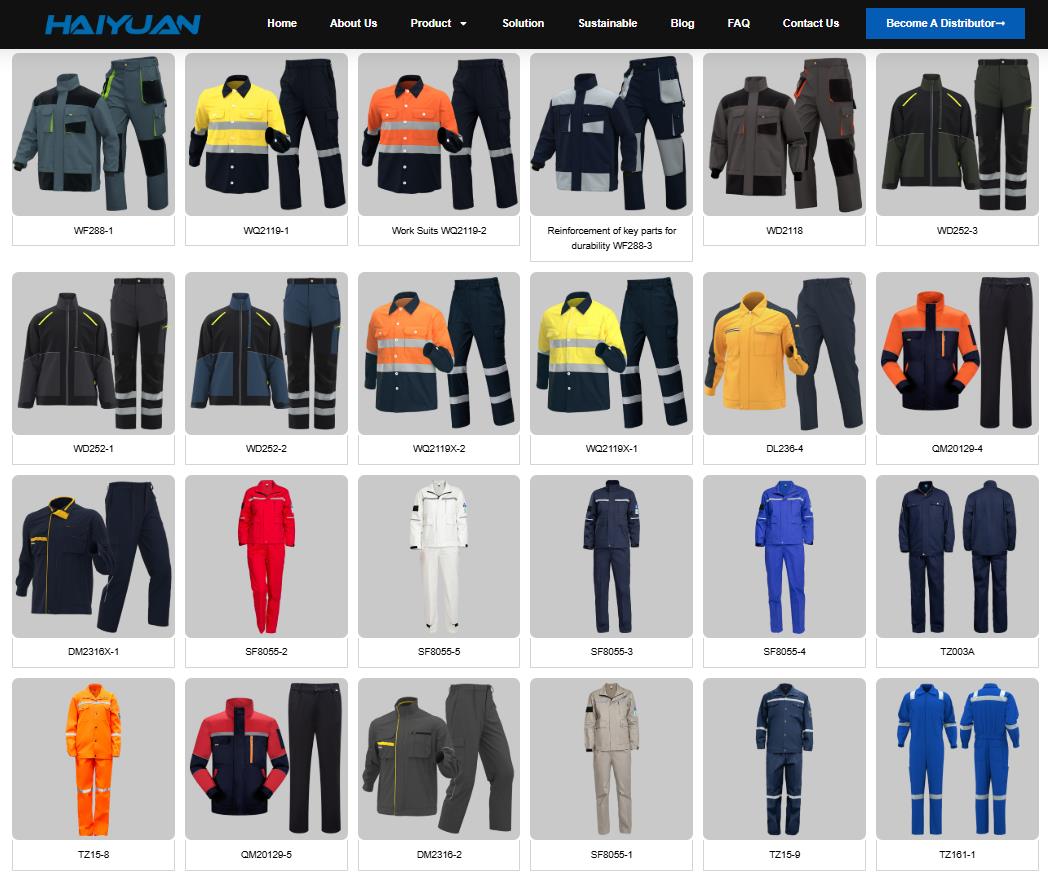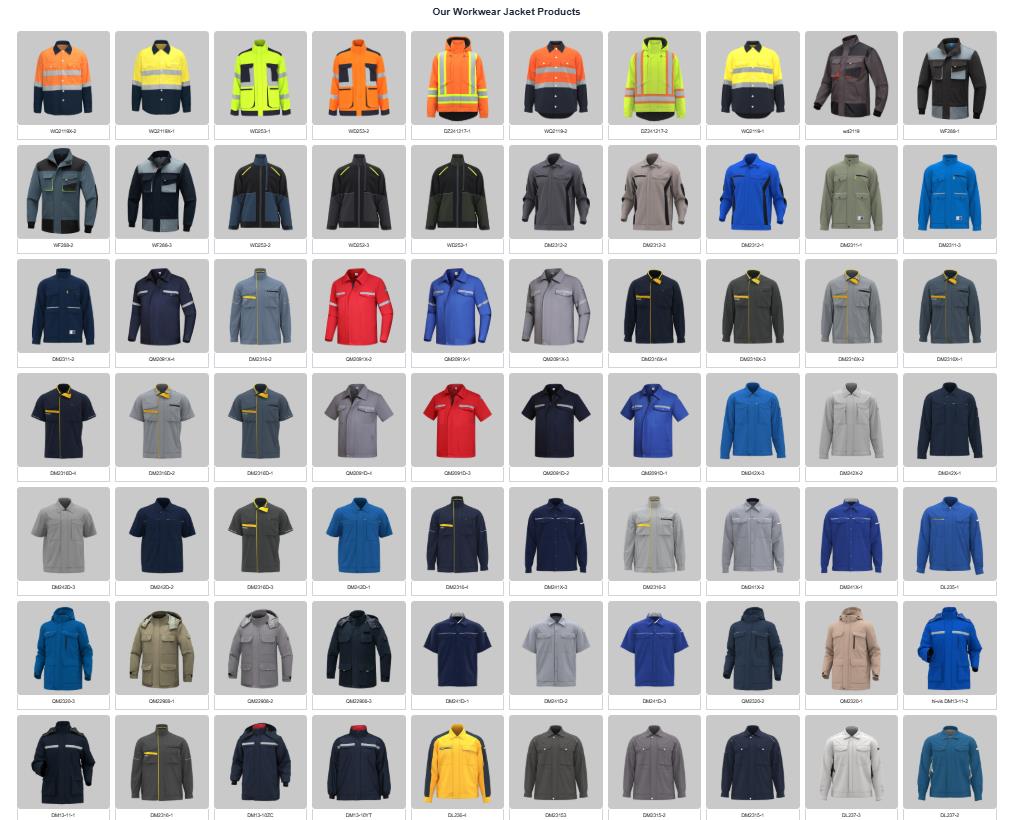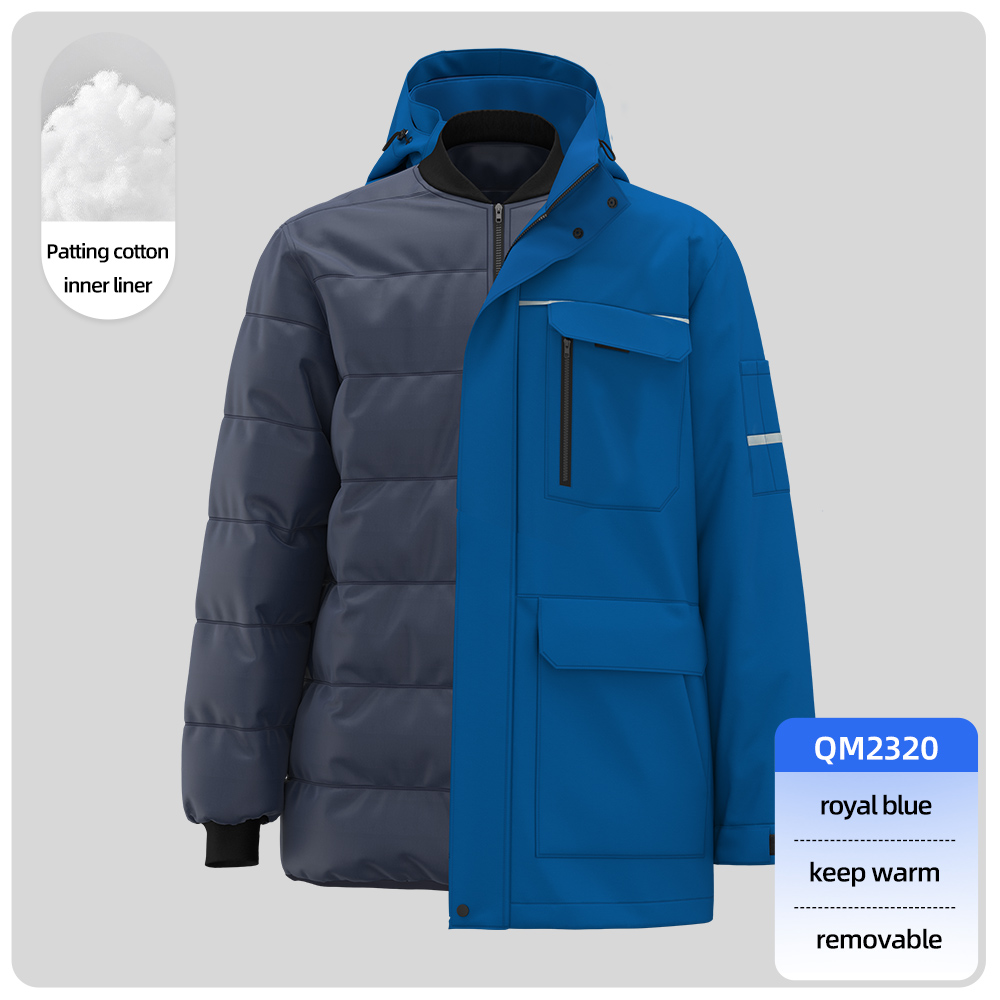Controlling costs when purchasing workwear in China requires refined management in many aspects, including supply chain optimization, material selection, production management, and procurement strategies. The following are key control points and specific implementation plans:
Ⅰ. Accurate demand planning – controlling costs from the source
-
Clarify purchasing standards
-
Differentiate job requirements (management/frontline staff/special jobs) to avoid over-design
-
Example: Ordinary polyester-cotton shirts for office workers (¥40-60/piece), wear-resistant canvas overalls for workshop workers (¥80-120/set)
-
-
Simple styles and colors
-
The whole company has unified ≤3 main colors, reducing fabric batches and printing and dyeing costs
-
Use basic styles (such as straight overalls), and add 15-30% to special styles
-
-
Reasonable purchase quantity
-
Reserve 5% for initial purchase and replenish quarterly thereafter (to avoid inventory backlog)
-
Reference formula:
Purchase volume = Number of employees × (1 + turnover rate) + safety stock
-
Ⅱ. Supply Chain Optimization – Cutting Out the Middle Links
| channel | Cost Advantage | Suitable for enterprise scale |
|---|---|---|
| Factory direct purchase (shijiazhuang haiyuan) | 20-40% lower than dealer price, transparent price | Single purchase > 200 sets |
| Industrial cluster procurement (such as Changshu, Jiangsu) | Compare prices from multiple factories and share freight costs | Regional Enterprise Alliance |
| Cross-border e-commerce OEM (Ali 1688) | Small batch order (50 sets), transparent price | Start-up/<300 sets |
Note: Avoid the risk of low price and poor quality by passing factory inspection (ISO9001 certification). We recommend leading OEM factories such as Shijiazhuang Haiyuan Work Clothing Factory and Hebei Fushirensheng Clothing Company.
Ⅲ. Material cost control – fabrics account for 60% of the cost
1. Fabric selection tips
-
Basic style: Choose 65/35 polyester-cotton blend (¥8-12/m), which is 30% lower than pure cotton and wrinkle-resistant
-
Winter cold protection: Use imitation down cotton (¥15-20/kg) instead of real down, reducing costs by 50%
-
Function upgrade: Anti-static fabrics add conductive yarn (+¥3-5/m), saving 40% compared to full-function fabrics
2. Excipient Simplification Program
-
Resin buttons (¥0.1-0.3/button) vs metal buttons (¥0.5-1/button)
-
Printing technology prefers thermal transfer (¥1-3/piece), avoid embroidery (¥5-8/piece)
Ⅳ. Cost reduction in production: order management is the key
-
Ladder Quotation Strategy
| Order volume | Unit price discount | Lead time | |------------------|-------------------|--------------| | 200-500 sets | Original Price | 10 days | | 501-1000 sets | 10% off | 17 days | | >1000 sets | 15% off | 30 days -
Production mode selection
-
FOB (Free on Board): Suitable for companies with export experience, reducing costs by 10-15%
-
CMT (processing with supplied materials): Purchase fabrics yourself, processing fee is only ¥15-30/set
-
Ⅴ. Hidden cost control: 3 major expenses that are easy to ignore
-
Logistics costs
-
LCL transportation: 500 sets of tooling from Ningbo to Shanghai by land transportation ¥800 (full truck ¥1500)
-
Request the factory to deliver the goods to the warehouse (EXW terms pass on the freight)
-
-
Tariff Optimization
-
The tariff on cotton workwear is about 6%, but it can be tax-free if you apply for a processing trade manual
-
-
Inventory loss
-
Implement the “pre-sale system”: employees place orders 15 days before joining the company to reduce the use of inventory funds
-
Ⅵ. Actual Case – Tooling Procurement Optimization for a Manufacturing Enterprise
-
Original plan: Purchase cotton workwear through traders at USD 7/set
-
After optimization:
-
Change to 65% polyester blended fabric (-¥35)
-
Directly connected to Ningbo factory (-¥48)
-
The order quantity increased from 300 to 800 sets (discount -¥25)
-
Heat transfer instead of embroidery LOGO (-¥7)
-
-
Result: The cost was reduced to ¥95/set, saving 276,000 yuan per year
Ⅶ. Risk Avoidance Checklist
-
Quality trap: The contract states that the color fastness is ≥ level 4 and the pilling level is ≥ level 3.
-
Delivery delay: agreed delay compensation (daily deduction of 0.5% of the contract amount)
-
Compliance risk: requiring factories to provide “Social Responsibility Factory Audit Report” (to avoid disputes over child labor/wage arrears)
The golden rule of cost control:
Total cost = (Fabric price × 1.15) + (Labor cost × 1.2) + Logistics cost
(Coefficient includes loss and management cost)
Through the above strategies, enterprises can control the procurement cost of tooling at 60-70% of the market price. It is recommended to make samples (¥300-500/item) for the first cooperation, and then place bulk orders after the goods are inspected and qualified, so as to ensure the balance between cost performance and quality.
To be continued……
If you have different opinions or additions, please contact me!





